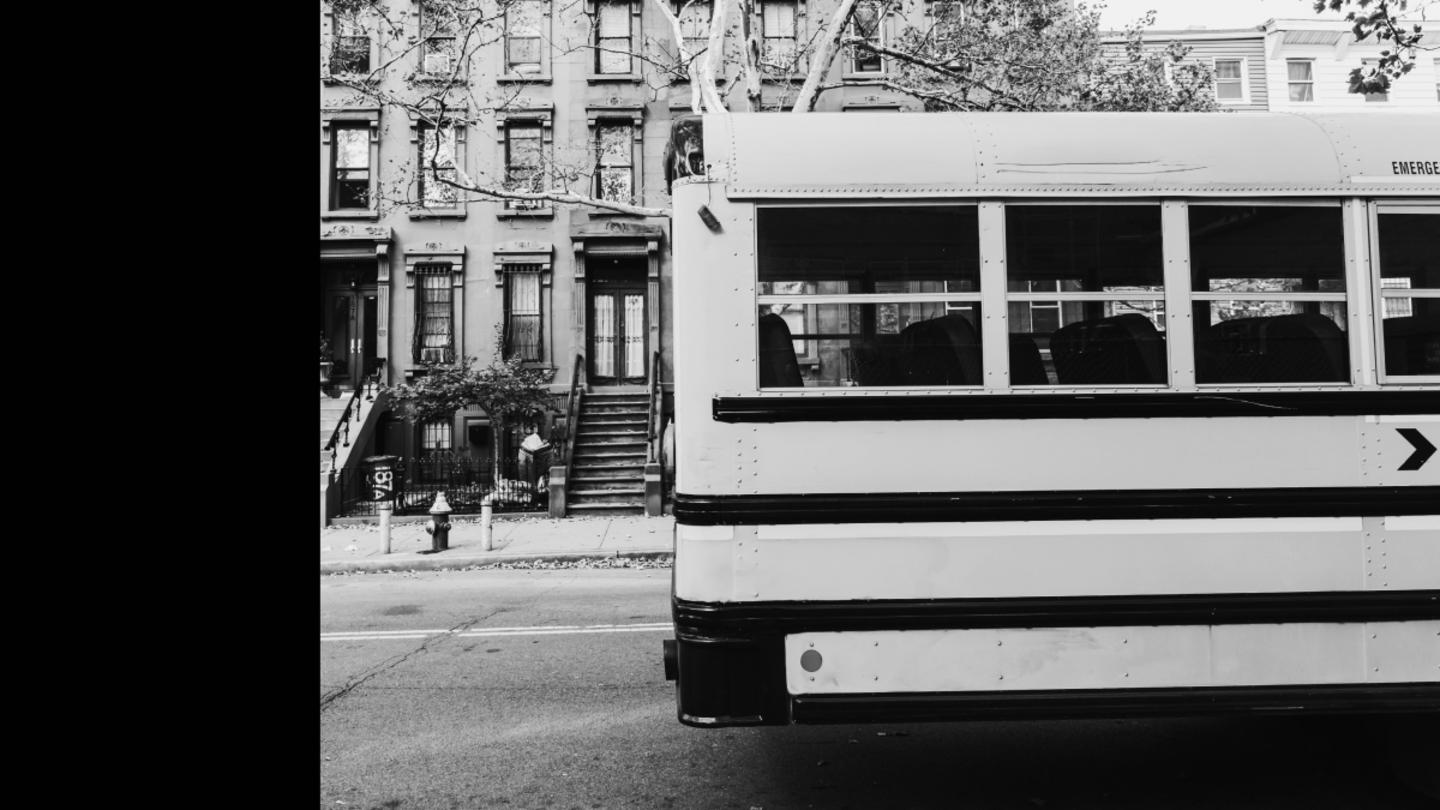As a child growing up in Baltimore, Derrell Bradford remembers his mother and grandmother discussing whose address they should use to send him to a different school.
“My family was having the same conversation that lots of families have all over the country: Whose address are they going to use to get into the school they aren’t zoned for?” said Bradford, who now serves as president of 50CAN, a state-based advocacy group working with policymakers to create education policies that empower all students to reach their unique potential.
In the United States, most public school districts assign students to schools based on their home address, making education the only public service tied to where a person lives — a practice that inevitably connects income levels to education access.
“We don’t use addresses for public parks, pools, hospitals, or anything else,” said Andrew Clark, president of yes. every kid., an organization that promotes prioritizing each child’s individual needs over one-size-fits-all systems. “Why do we residentially zone schools?”
50CAN and yes. every kid. are urging policymakers to eliminate school boundary lines by 2030. Tying school access to where people live isn’t just unfair — it worsens wealth gaps, limits children’s lifelong potential, and deepens racial and income divides. Ending this form of legal discrimination could alter the individual trajectories of children and improve millions of lives throughout the country.
Though well-intentioned, the focus on desegregation over the last 70 years has failed to deliver on the promise of equality. Clark and Bradford argue that true equality in education is about freedom and access to resources and opportunities — not just integration.
For Bradford, the issue is deeply personal. “If I had not had a mom who was prepared to break the law to send me to a better school, my life would have been radically different — and probably not better,” he said. “Kids with all the same potential who lived next door to me never really had the chance to become the fullest, best versions of themselves.”
“We just didn’t count their potential as equal. The lines were more important.”
Don’t mistake desegregation for equality
A year after the Supreme Court issued its landmark Brown v. Board of Education ruling that declared racial segregation in public schools unconstitutional, it released a second ruling. In Brown II, the court instructed states to begin desegregation “with all deliberate speed.”
What if that was the wrong decision?
The desired result of the desegregation mandate was integration. In this way, the decision was laudable because it tried to make America a safe place for people from all walks of life to live, work, and play together. It just hasn’t worked out that way.
“The court was trying to make our education system more diverse,” said Clark. “The intention was noble, but the solution has been ineffective. We actually see greater segregation now than we did before the Brown decision.”
Linda Brown, the third grader the case was named after, rode a bus across town every morning to attend an African American school, bypassing the all-white school a few blocks from her home in Topeka, Kansas. According to Clark, Brown didn’t ask the court to desegregate schools. She asked that it affirm her equal right to attend a school of her choice — in this case, the all-white school she could walk to.
“She said, ‘If I’m an American, I have equal rights, and I have just as much claim on that school as anyone else,’” Clark explained. “Equal rights means actual equal rights.”
The Supreme Court didn’t address the question of Brown’s equal right to attend any public school. Instead, it mandated desegregation. States created elaborate desegregation plans that included busing students across town (just like Brown) and assigning families to specific schools to get a desired racial composition.
“What she (Brown) asked for was equal rights and equal treatment,” said Clark. “That never happened.”
In 1979, 25 years after the court supposedly resolved the issue, Brown and other parents reopened the case. They sued the city of Topeka again because their children still couldn’t go to the school of their choice. That case was finally settled in 1993, again with more promises of desegregation.
School access is unfairly restricted by geographic boundaries
Available to All, another organization working on education equality, recently published a report detailing legal discrimination in public schools in all 50 states. School districts continue to exclude low-income children — many of them children of color — from the most popular public schools.
According to the study authors, “In 2024, Linda Brown wouldn't be turned away from a coveted public school because of her race, but it's likely she would still be turned away. And it's all perfectly legal.”
The most common reason a student is turned away is because they don’t live within the school boundaries.
Available to All has found that school boundaries in cities across the country closely align with the federal government’s redlining maps of the early 20th century. Entire neighborhoods of minority and low-income families were labeled “hazardous” or “risky,” undermining property values and locking residents into cycles of generational poverty that persist today.
It’s time to reexamine how those lines continue to shape our country, specifically in education.
“At times, Americans have passed policies that don’t reflect who we aspire to be as a nation,” said Bradford. “The early 20th century, with the creation of housing patterns, redlining, and legalized segregation, was not our finest hour as a people.”
Those outdated policies have resulted in a public education system with implicit tuition requirements: purchasing a home in the school district, which comes with a price tag most low- and middle-income families can’t afford.
Property values have become tightly intertwined with perceived school performance. Though testing is only one measure of school quality, scores from school to school get a lot of attention from homebuyers and parents. Research has found that high-performing schools (as indicated by test scores) can increase housing costs by 240%.
Another study found that minor improvements in a school’s test scores increased home values in the district by 1.8%, and money spent on housing and development went up by 2.5%, meaning developers prefer to build in high-performing school districts.
This dynamic has reinforced income and social inequalities for decades. Without access to choices in education, children living in low-income school districts struggle to find the path that suits them best.
That’s not to say America can’t correct its course. 50CAN, yes. every kid., and Available to All recommend eliminating school boundaries. Doing so could reverse these debilitating structural inequalities. A 2015 review of school choice research concluded: “Open school enrollment and choice may result in less economic and social segregation, as well as real estate property value equalization.”
Sign up for Stand Together's K-12 newsletter and get stories, ideas, and advice from changemakers who are transforming education across the country.
Which is worse? A black market for parents or schools cherry-picking students?
This system of zoning schools based on address creates other undesirable effects in American society. Parents are incentivized to cheat the system, something many are willing to do because their children’s futures are so important. In turn, schools resort to hiring private investigators to follow children home in attempts to catch parents violating the system.
Even in states with limited open enrollment policies, some schools are using them to artificially inflate their performance levels, cherry-picking which students are allowed to attend from outside school boundaries.
Like Bradford’s mother and grandmother, many families resort to address sharing. They use a relative’s or a friend’s address to get their children into schools they think are a better fit. “The way that we marry address and attendance zones has basically created a black market for how people get into the school that works best for their children,” said Bradford.
“This is fairly prevalent,” Clark noted. “Something like 15-20% of Americans are doing this.”
In 24 states, address sharing can be prosecuted as a crime. For example, in Ohio, Kelley Williams-Bolar was jailed for nine days and convicted of felonies for using her father’s address to enroll her daughters in a safer, better-performing middle school. Meanwhile, a Pennsylvania father was charged with criminal theft for enrolling his daughter using his father-in-law’s address. He accepted a plea bargain and a hefty $11,000 fine because prosecutors threatened him with a seven-year jail sentence.
On the flip side, many open enrollment policies leave the ultimate decision of who to admit up to the schools. Some schools are using that discretion to discriminate against students that might make them “look bad.”
In Arizona, where charter schools are required to follow blind enrollment policies, public schools regularly turn down special-needs students. One mother applied for open enrollment for her two children and her nephew. Her daughter and nephew were accepted, but her son, who had an individualized education program, was told the school had reached capacity.
“There’s this inherent systemic pressure to stack your school with kids who are easier to educate,” one anonymous educator told Available to All. “Someone needs to be looking out for the kids, making sure they get a fair shot.”
Hope for more choice is on the horizon
Even though more than two-thirds of Americans support ending residential assignment, so far, no state has successfully eliminated the lines. However, other policies that increase educational freedom are getting us closer.
Bradford explained that options like open enrollment, education savings accounts, charter schools, and vouchers are proving it’s possible to run an education system that isn’t based on address.
“The system that we want includes public schools,” he said. “These other options are living proof that it is possible to do. It’s not like we’re saying, ‘Hypothetically, we could have a system with no more lines.’ We have a system of schools of all types already that work without them.”
According to yes. every kid., states can move closer to the goal and prove that addresses aren’t a necessary part of the system by passing three policies:
- Prohibit discrimination based on address.
- Decriminalize address sharing (including prohibiting prosecutors and local governments from using the state’s general criminal law to prosecute parents).
- Create statewide mandatory open enrollment.
To date, 16 states mandate open enrollment. Zoning lines still exist, but open enrollment policies make it possible (though not guaranteed) for students to switch districts. Only Idaho explicitly prohibits address discrimination. And 26 states have decriminalized address sharing.
Arizona has made strides toward equal access to education. Since 1994, as long as both schools agree, a student can leave their zoned school and attend in a different district. The state also has robust charter schools, ESAs, and tax credits that empower students with state funding to pursue their own definition of a quality education.
According to Arizona’s Department of Education, 30% of kids transfer to a public school other than the one they’re assigned to.
“This is all encouraging stuff,” said Clark. “It’s far from equal access, but there’s a huge amount of movement.”
Efforts to get rid of the lines run into some complex issues — like fear of changes in property values. Many people assume eliminating school zones will cause home values in some districts to dive, but research from Duke University disputes this assumption. The equalizing effect is likely to come from homes in low-performing districts gaining value while homes in high-performing districts hold steady.
Information and increased awareness are key. “One of the first steps is helping people understand that this is a problem of real folks,” said Bradford. “This isn’t something in the shadows.”
The end goal has never changed: “We want equality for every single kid,” said Clark. “I don’t care who your parents were. You have inherent worth as a human being. I value you for who you are. We should treat everybody equally.”
***
The Stand Together community partners with changemakers who are tackling the root causes of America’s biggest problems.
Learn more about Stand Together’s education efforts and explore ways you can partner with us.

‘We want these boys to know that regardless of where they come from, they still can be excellent.’

This colearning space has the potential to bridge the divide between public and private education.

New Johns Hopkins data shows homeschooling’s recent surge has transformed the education landscape.
Step 1: Find the best learning environment for your child. Step 2? Figure out how to pay for it.
